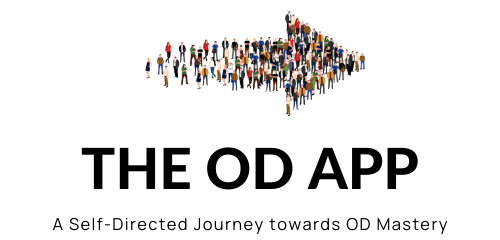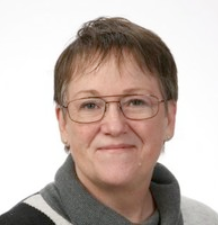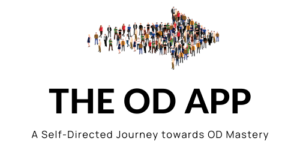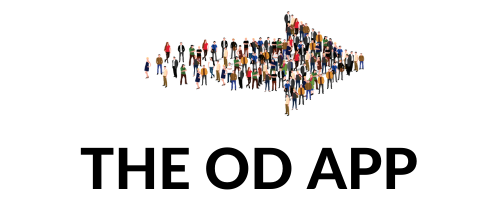HSD helps people thrive in complexity and uncertainty. The theory, tools. and processes build adaptive capacity to respond to overwhelming challenges of systemic change. OD practitioners use HSD in all practices of human interaction, from individual coaching to community transformation.
Part I: My journey into HSD
In the early 1980s, I was an entrepreneur, technical trainer, and facilitator of collaborative action. I realized a difference between the practices I had been taught and the ones that worked with my clients and teams. What was supposed to work, often failed. Experimentation and intuitive responses often succeeded. I wanted to know why. To answer that question, I began a journey of action learning, shared exploration, desk research, and personal reflection. On that path, I encountered complexity sciences and systems thinking. In those emerging fields, I found a grounded theory and a variety of practices to help me and my clients collaborate with—rather than fight against—the power and potential of complex change in human systems.
My research continued in a doctoral program with the Union Institute and University, under the guidance of mechanical engineer, Kevin Dooley, and community psychologist, Donald Klein. By the conclusion of my studies, it was clear to me and my committee that this work at the intersection of social and physical sciences did not fit neatly into any existing scholarly discipline. We named the emerging field of Human Systems Dynamics (HSD). It encompasses the theory and practice of setting conditions for intentional self-organizing in social systems at all scales.
Since 2002, I have continued my research, teaching, and practice in collaboration with colleagues, students, and clients. Our HSD community has published in practitioner and scholarly journals, written books, developed products and services. We continue to expand our theory and practice. We work together in the Human Systems Dynamics Institute, helping people and institutions thrive in uncertainty and complexity. Today we are a global network of over 900 scholar practitioners. Each one reinvents HSD to respond to the emerging challenges for themselves, their clients, and their communities.
The journey of exploration and discovery has been exciting, but my greatest satisfaction comes when my students and clients find hope and possibility in the overwhelming chaos of complex change.
Part II: What is HSD?
HSD practitioners see patterns in complexity, seek to understand it in many useful ways, and take action to shift those patterns toward health, productivity, justice, and happiness. Using the HSD theory and worldview, as well as a range of tools, they help people thrive in complexity and uncertainty. As a field of study, HSD derives its theoretical roots from complexity science and chaos theory. As a highly useful and effective practice, its applications emerged from decades of engagement with individuals and groups around the world. The HSD vision captures the identity of HSD and its community:
People everywhere thrive because we see patterns clearly, seek to understand, and act with courage to transform turbulence and uncertainty into possibility for all.
Excellent HSD practice makes this vision a reality with individuals, teams, organizations, and communities. A global network of certified HSD Professionals and uncertified practitioners rely on three institutions for support for their practice and continued learning in the world of HSD.
HSD Institute. In 2003, the Human Systems Dynamics Institute was founded to support development and dissemination of the theory and practice of human systems dynamics (HSD). As a virtual organization, it maintains a presence on the web (www.hsdinstitute.org) and supports research, personal and professional development, and connections among HSD Professionals. It offers public training to help individuals develop adaptive capacity, as well as consulting with communities and organizations in all sectors. It supports extensive pro bono activities to help people and communities expand and deepen their practice of HSD and adaptive capacity.
Global network. The network of certified HSD Professionals uses the concepts, models, and methods to help individuals and groups navigate complexity. They respond to challenges in all sectors to improve leadership; engagement; diversity, equity, and inclusion; teambuilding; coaching; human resource strategy and tactics; organization development; software development; and any other aspect of human performance. In addition, there is a larger global network of practitioners who use HSD without the formal HSD Professional certification.
Models and methods. The HSD theory is embedded in a collection of models and methods that bring the practice to life. The tools are called “models and methods” because they help you see what is happening (model), and they provide options for individual and collective action (methods). All of them are designed to reveal and influence patterns of simplicity in the chaos of human systems. All of them are:
- Simple and practical. They are easy to use, teach, and learn, so clients do not need to know the underlying theory to use HSD successfully.
- Flexible. The same HSD tools can be applied to individual, team, organizational, and community issues, and any number of presenting problems.
- Theory-based. They depend on deep understanding of the dynamics of complex adaptive systems to explain HOW change happens, even when prediction and control are impossible.
- Open source. The HSD Institute encourages people to use and share their models and methods. They make two requests: 1) Cite the source so people can learn more, and 2) Teach back what you learn to help sustain a vibrant community of learning and practice.
Part III: What is excellent HSD practice?
An HSD Professional begins with a complex, messy, wicked client issue. The problem may belong to an individual or a group. It may relate to culture or any other complex challenge that emerges when people work or live together. The Professional guides the client through a series of Adaptive Action cycles, helping them ask generative questions. WHAT are the current patterns of interaction? SO WHAT can we learn and what is possible? NOW WHAT actions will move current patterns toward more desired ones in the future? Each action shifts the pattern of the complex environment, leading to the next WHAT? and a new cycle of perception, learning, and action.
In addition to guiding clients to resolve immediate and urgent issues, the HSD Professional focuses on building adaptive capacity in the client system. The goal is that, through demonstration, guided practice, and feedback, the client progresses to independent practice to see, understand, and influence patterns of performance in their own systems.
HSD Professionals apply HSD to tame their own wicked issues of personal development, as well. They use the principles and practices in their own lives to see, understand, and shift the patterns and behaviors that shape health, growth, and well being for themselves and their families and friends.
All HSD Professionals are informed by the shared vision of a present that creates a more generative and healthy future:
People everywhere thrive because we see patterns clearly, seek to understand, and act with courage to transform turbulence and uncertainty into possibility for all.
The core practice of HSD is Adaptive Capacity. It is the agility to engage with change as it happens and to help others do the same. Adaptive Capacity is based on three processes and six behaviors. Together, these elements comprise the foundation of excellent HSD practice. Excellent HSD practice is not just a goal to reach or a checklist to be completed. It is a perpetual practice that emerges and matures over time. Each HSD Professional interprets and implements these elements differently, as they adapt and adjust to their environments, client requirements, and professional expectations.
Three Processes of Adaptive Capacity
Adaptive Capacity requires continuous attention and learning. Three processes frame the discipline required to sustain the stance of HSD practice: Inquiry, Adaptive Action, and Pattern Logic.
Inquiry includes a collection of practices to help people challenge their individual and collective assumptions and to prepare for uncertain and emergent situations. For the HSD Professional, inquiry means:
- Turn judgment into curiosity
- Turn conflict into shared exploration
- Turn defensiveness into self-reflection
- Turn assumptions into questions
These practices frame a stance of inquiry, in which the HSD Professional engages with changing systems without getting stuck in old mental models or assumptions. When HSD Professionals practice this stance of inquiry, they meet clients where they are, respect constraints in the clients’ systems, and leverage clients’ strengths and opportunities to set conditions for change.
Adaptive Action is a three-step, iterative learning and decision-making process. It includes data collection (WHAT?), meaning making (SO WHAT?), and action taking (NOW WHAT?). Complex systems are highly interconnected, so every NOW WHAT? action shifts the current pattern and creates the need for the next WHAT? In this way, Adaptive Action creates a continuous process of learning and action for HSD Professionals and their clients.
This simple, flexible process works for individuals in a moment, as well as large-scale interventions like community planning and development. HSD Professionals use Adaptive Action in a variety of ways. They support clients to engage with a variety of complex challenges. They reflect on their own professional development and learning. They assess performance for themselves and their clients to ensure continuous adaptation and improvement.
When HSD Professionals practice Adaptive Action, they engage in continuous learning, reflective sensemaking, and effective action for themselves and all scales of client systems, including personal growth, team development, organization design, strategy, and community development.
Pattern Logic supports meaning making when traditional methods fail because of the complex nature of the challenges. It also informs action, when the usual “best practices” are not effective. In HSD “pattern” has a specific, technical meaning. It refers to three conditions that influence the path, process, and products of self-organizing processes.
- Container (C) holds the parts of the system together as they engage and begin to self-organize.
- Difference (D) gives meaning and energy to each part and to the ways they come together to form systems.
- Exchange (E) connects parts of the system together across differences to realize the potential of the system for the future.
These three conditions are captured in the CDE Model for Self-Organizing in Human Systems, and they form the technical definition of Pattern Logic. Based on these conditions HSD Professionals are able to see a system clearly and simply (WHAT?). They are able to understand the potential for change (SO WHAT?). Finally, they are able to choose options for action to change the conditions and shift the system toward greater effectiveness (NOW WHAT?).
When the HSD Professional practices Pattern Logic, they stand in inquiry as they consider the conditions of the current situation, recognize tensions among the conditions that indicate potential for change, and take action to release the tensions and actualize the change process.
No matter how complex or confusing a situation may be, the HSD Professional is able to use these three interlocking processes—Inquiry, Adaptive Action, and Pattern Logic—to see, understand, and influence change as it happens in human systems.
HSD Competencies: Six Behaviors of Adaptive Capacity
Excellent HSD performance emerges as Professionals engage with wicked challenges in complex environments. The science of complexity teaches us that system-wide patterns emerge when one person consistently follows (and when all members of a group follow) one set of Simple Rules. The HSD Simple Rules define the behaviors that generate our Patterns of Professional Performance. They guide the decision making and action that continually recreate the pattern of our vision that everyone thrives.
The HSD Simple Rules apply to everyone who wants to be a part of the HSD network, whether or not they are certified HSD Professionals. Everyone in the community tries to follow these rules at all times, regardless of context, contract, or engagement.
- Stand in inquiry. This rule invites each HSD Professional to turn judgment into curiosity, conflict into shared exploration, defensiveness into self-reflection, and assumptions into questions. This rule is the foundation of HSD theory and practice because the essential uncertainty of complexity demands clear and consistent curiosity.
When HSD Associates apply this rule, they support each other in learning and action networks, and they challenge each other to build the capacity to stand in inquiry for and with clients. They do not blame clients for the challenges they face but look for positive options for action.
- Search for the true and the useful. Many applications of complexity science in human systems are true because they reflect the objective facts of complexity science. Other applications may be useful because they work under some circumstances. In HSD, we focus on practices that are both true (aligned with science) and useful (practical powerful in real situations).
HSD Associates who follow this rule continually assess their thoughts, words, and actions against these two criteria and adjust as needed. - Zoom in and zoom out. Twentieth century science teaches us that complex systems function at many different scales at the same time. Individuals influence teams; teams influence strategy; strategy influences operations. At the same time, each of these larger systems influences the smaller ones within. Change in one place at one scale can ripple out and change the system as a whole. Because we recognize this massive interdependency, patterns of HSD performance apply equally to all levels of human systems interactions, including individual coaching, relationship development, teambuilding, organization design, and community development.
An HSD Professional demonstrates the Adaptive Capacity to shift with the client to focus on the scale of action that is most likely to shift a pattern and unstick a wicked issue. - Find the energy in difference. While “common ground” is an important feature of effective organizations, it is not sufficient for adaptive change. In drawing from complexity science, HSD recognizes that adaptation is driven by the tension of difference. If it is ignored, difference has the power to disrupt generative change. If irrelevant differences receive too much attention, destructive patterns may emerge. The role of an HSD Associate is to discern differences that make a difference in time and place and task; to bring them to a group’s attention in a useful way; and to guide clients in acting to release the energy locked in their mental models, processes, people, relationships, and cultures.
When an HSD Associate follows this rule, they are sensitive to the current patterns and the potential energy locked in existing differences. They focus on differences that make a difference to the client and engage in ways that release and leverage the energy for pattern transformation. - Connect with stories and impacts. In a complex system, narrative carries shared identity and intelligence for action. The HSD Professional is able to use the three key questions (WHAT? SO WHAT? and NOW WHAT?) to explore and explain the changing state of the human system. The repeated Adaptive Action cycle integrates learning, evaluation, and communication into every individual or collective action.
When HSD Professionals practice this rule, they share generously and assess openly to enhance individual and collective learning. - Celebrate life. The final HSD Simple Rule is important now, and it will become even more important in the future. People, organizations, and communities will be required to navigate disruption of climate, politics, society, economy, and institutions. OD clients and practitioners alike will find it difficult to feel and share optimistic views. This Simple Rule reminds us to acknowledge how much we do not know and to accent patterns of hope and wellbeing wherever they emerge.
When an HSD Associate lives this rule, they do not deny pain or challenge, but they acknowledge possibility and hope in any situation.
This list of Simple Rules defines the behaviors which, in collaboration with the processes, generate Adaptive Capacity, the HSD Pattern of Professional Performance. None of us practices these behaviors and processes perfectly or consistently. We do, however, recognize their importance and work diligently to generate these patterns and to help others do the same.
Part IV: What is the path to HSD Professional?
HSD Professionals continually recreate themselves by developing ever-greater levels of Adaptive Capacity. Even I, as founder of the field, expand my understanding and capacity for action in every engagement.
The practice of HSD is not a destination. It is a journey. Like the complex systems we explore, my own practice evolves over time. I encounter novel and challenging situations and develop capacity in the moment to serve the system in the best way I can imagine. I observe consequences, learn, and begin another cycle of Adaptive Action.
HSD is not a cluster of tools. The field of HSD draws from theory of complexity and practice with real human systems. The HSD Professional, too, must be committed to theory and practice. As the founder of the field, I am constantly testing my ideas against my experience and my experiences against ideas. Through this process, the field, my personal practice, and the patterns across the community continually evolve.
HSD is not a solo practice. The HSD processes and behaviors are only possible in community. Of course, personal reflection and humility are necessary parts of HSD practice, but the engagement with others generates opportunities for continual growth and development. Since founding the field in 2001, my life and practice have been immensely enriched by members of the HSD community who bring their curiosity and wicked issues, as well as their experiences and insights. In this human system, we continually recreate ourselves as HSD Professionals.
Most people enter the HSD community in a number of stages.
- Read about HSD or learn about the practice from a friend or colleague.
- Explore the theory and practices in free events, such as Live Vitrual Workshops, Daily Power of Questions sessions, or periodic meetings of the community.
- Attend a tuition-based event, such as an Adaptive Action Lab on a particular topic. Recent topics for AA Labs have included facilitation, consulting in complexity, narrative, conflict resolution, and JEDI practice.
- Engage with members of the community to explore the benefits and opportunities of the HSD approach to complexity.
- Attend a certification program, including five intensive sessions and four months of guided practice and continued learning.
- Continue to expand their personal capacity as they bring HSD to life in a never-ending stream of complex human systems interactions.
The HSD Institute offers many opportunities to develop and practice Adaptive Capacity. Current offerings are included on the HSD Institute website www.hsdinstitute.org. While new programs are offered every month, the following events form the core of HSD Institute offerings.
HSD tuition-based programs:
- Human Systems Dynamics Professional Certification. Offered in both virtual and blended versions, this four-month program builds the theory and practice of HSD Associates. It includes a lifetime membership in the global HSD network.
- Adaptive Action Labs. These practical programs, offered virtually, focus on specific challenges of human systems. In two, three-hour sessions, participants apply HSD theory and practice to tame their own wicked issues.
- HSD coaching and consulting. The HSD community provides training, coaching, and consulting services to support individuals and all kinds of institutions around the world.
Free public programs:
- Live Virtual Workshops. On a monthly basis, the HSD community offers free one-hour webinars on a wide range of topics. These sessions are recorded and made available on the RESOURCES tab of the website.
- Inquiry IS the Answer. Every weekday, members of the HSD community gather online for 30-minute sessions. One of the group offers a particular wicked issue, and others use the Power of Questions to help them find Adaptive Action. Registration is open. Everyone is welcome.
For information or to register for any of these sessions, send an email to info@hsdinstitute.org.
Part V: Resources
Eoyang, G., & Holladay, R. (2013). Adaptive action: Leveraging uncertainty in your organization. Stanford, CA: Stanford University Press.
Holladay, R. & Quade, K. (2008). Influencing patterns for change: A Human Systems Dynamics primer for leaders. CreateSpace Independent Publishing Platform.
Olson, E.O. and G. H. Eoyang. (2001). Facilitating organization change: Lessons from complexity science. San Francisco: Josses-Bass/Pfeiffer




